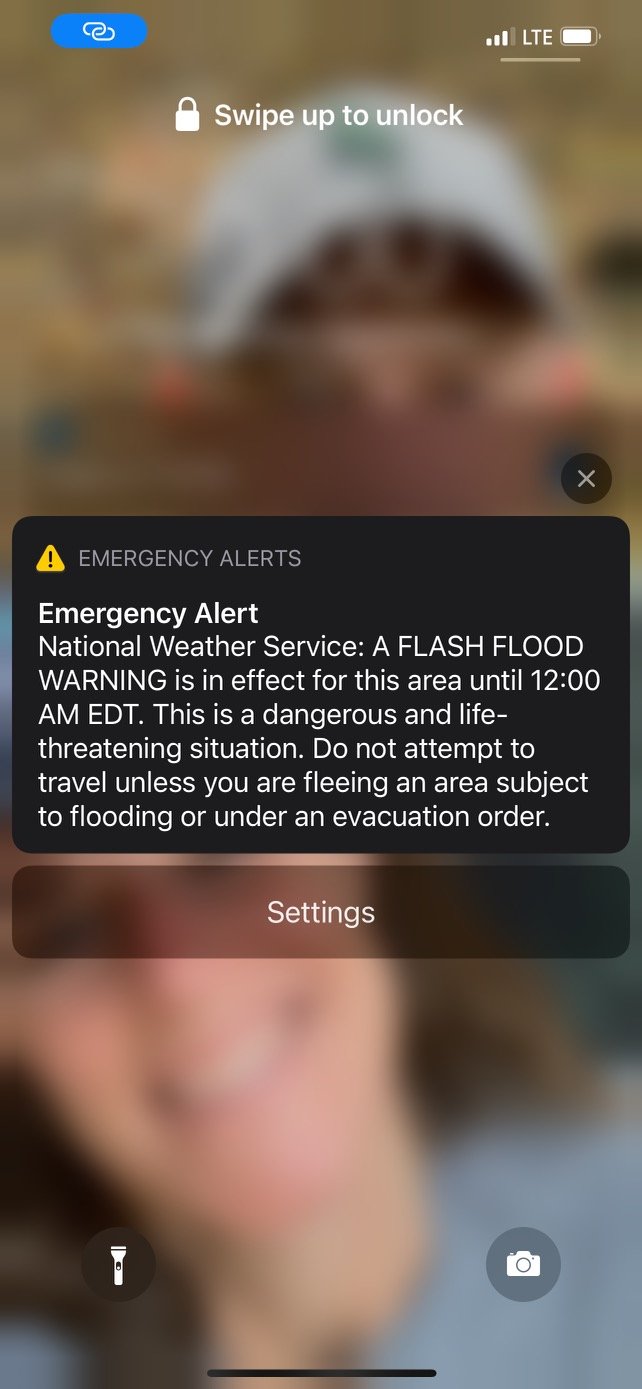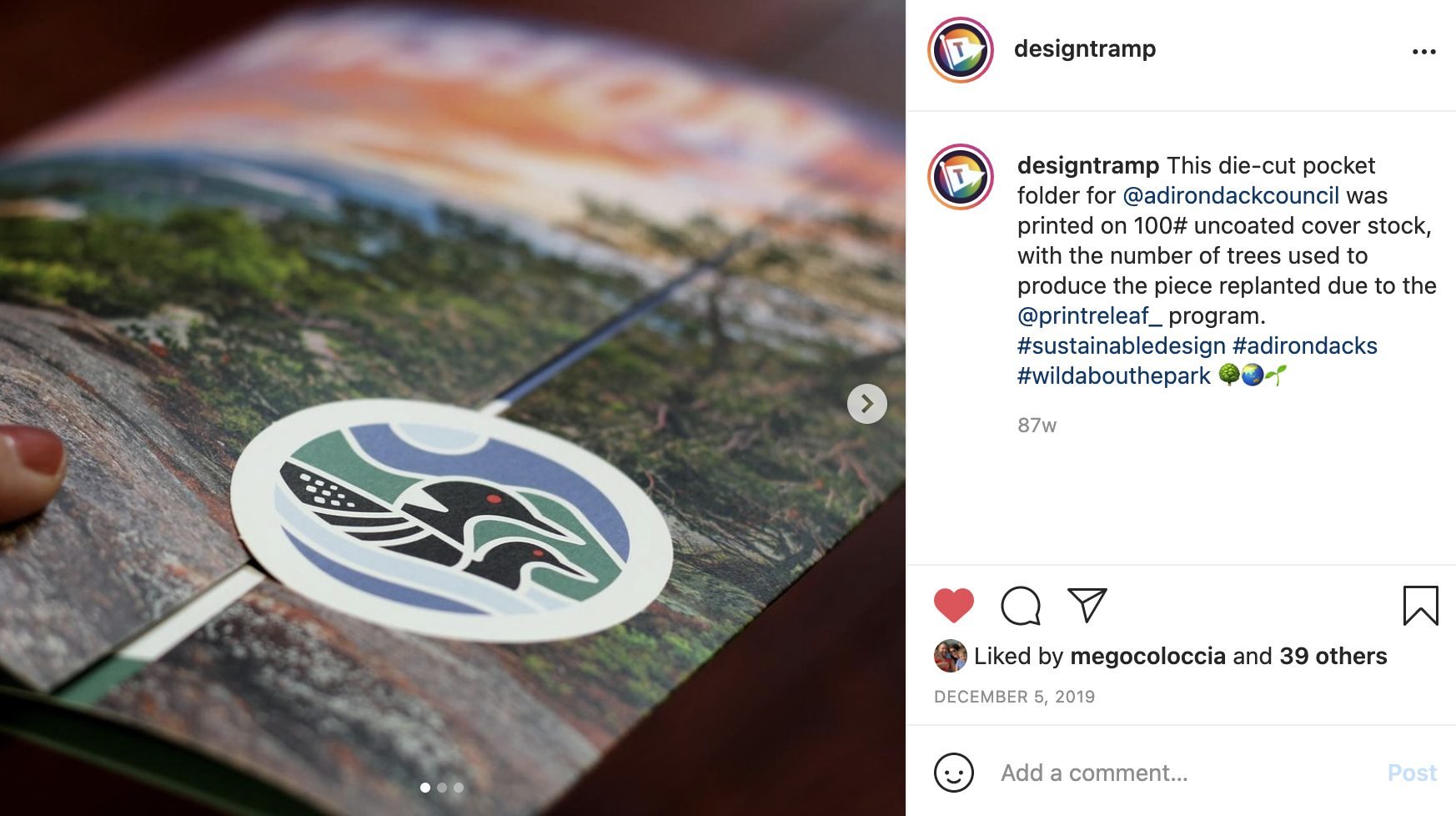Business during climate change: Code Red for humanity
As a design and communication agency, we want to contribute to conversations and efforts around climate change. Our clients often ask us to help with a green message. We aren't interested in perpetuating greenwashing, pinkwashing, or any other lipstick-on pig gestures made to get credit without putting in the work. It can make for awkward conversations, but nine times out of ten, we're better for having endured those awkward talks. A global pandemic creates certain universal realities; among them is climate change. A landmark study released by the Intergovernmental Panel on Climate Change (IPCC) sounds an alarm for humanity."It is unequivocal that human influence has warmed the atmosphere, oceans, and land," reads the IPCC's report. So what does that have to do with a design and communication agency? Everything, just like it does for every other business and person living on earth. But, after a recent trip to New York City was derailed by flash flooding, the nowness of the issue hit in new ways.
Image of a cell phone with a flash flooding weather alert on the screen. Climate change
Three key points from the IPCC report
Let's look at the hottest points from the report (pun intended, because even as the earth burns, we have to keep a sense of humor):
Not since 1850 have there been years as hot as the past five.
The rise in sea level rate has tripled since 1901-1971.
The primary driver of the global retreat of glaciers since the '90s & the decrease in Arctic sea ice is with 90% certainty human influence. Cold events have become less frequent and severe, while hot extremes, including heatwaves, have become more frequent and intense.
Climate change: Time to panic? Time to act?
The short answer is, yes, we should worry about climate change. The longer answer is, there are both causes for panic and time to act. As a global community, we need to recognize that it’s time to deliberate about moving, doing business, and consuming.
"We will see even more intense and more frequent heatwaves," said Dr. Friederike Otto, of the University of Oxford, UK, and a contributing IPCC report author."...an increase in heavy rainfall events on a global scale, and also increases in some types of droughts. Lowering global warming really minimises the likelihood of hitting these tipping points," said Dr. Otto. "We are not doomed."
Tackling climate change at the local level
Here's a list of things to help you develop a plan for participating in fighting climate change:
Check your carbon footprint—Take a test to find your grade.
Education—Create opportunities to grow community awareness that small, ongoing changes can lead to long-term impact.
Prudent purchasing—Evaluate vendors. Are they sourcing from ethical places, and do they have a policy for minimizing environmental impact?
Engage your workforce—Are you taking advantage of the different minds on your team? Employees can bring new insight and motivation for new initiatives that have meaning for them.
Make peace with compromise—You can't have change without, well, change. Inconvenience, discomfort, and maybe even a sense of loss will likely be a part of any exercise toward diminishing your carbon footprint.
Study—Look around at competitors, peers, and even other industries. Are there techniques you can adopt?
Create long-term goals—Change doesn't happen overnight. It also doesn't happen without commitment. Create realistic yet ambitious goals for adopting green practices.
We have clients, friends, and people in our network who make incremental changes to benefit the environment. Now seems like a great time to share some of those efforts to inspire us all.
Conserving land for public recreation and education
An illustration of a bucolic vista in Williamstown, MA with images of boots and leaves preseresenting the importance of land conservation.
Williamstown Rural Lands was founded 35 years ago and has been advocating for protecting the area's rural nature ever since. The organization is an educational and recreational resource, offering hands-on workshops, guided trails, and events to connect people of all ages to the land.
Printing with an emphasis on planting
Over the years, people have veered to and away from printing. Referring back to #4 in the list above, it was Kaitlin Pope who said one day,
"Can we start using the backs of printed paper to print things we need to maximize the utility of each sheet of paper?"
Image of a folder featuring an Adirondack trail and a circle with two loons.
A certificate of PrintReleaf acknowledging that SeriousFun Children's Network has reforested trees to offset the printing they have done.
It was with equal parts sheepishness and disbelief that we said yes. How many years had we not made use of another tray on the printer or even given much thought to our wasteful ways? We had a print rep contact us about a program that factors the number of trees harvested to produce a printed piece, and in turn, that same paper footprint is reforested at planting sites a customer can choose. The program is called PrintReleaf, 'You print one. We'll plant one.'Several of our clients, including Lake George RV Park and the Adirondack Council, chose to use this program. For Lake George RV, they have deliberately cut how many communications they print, transitioning to digital as they've been able. Their Vacation Guide is the one piece they must print; thanks to PrintReleaf, it feels like a good decision. Our friends at SeriousFun also began using the PrintReleaf program.
After-hours contributions
An instagram post with a letter conveying 424.2 pounds of food waste was composted instead of put in the trash.
Matt and Nancy Fuller run Fountain Square Outfitters in downtown Glens Falls. They live and breathe environmental responsibility. One of the lines they carry is Patagonia. The brand has taken walking the walk to new heights. I was talking to them one day about the wear on one of my jackets, "That's the good stuff. Run that gear into the ground." It gave me pause as I had thought it might be time to rotate on to something newer. As we are pressured to buy, buy, it's nice to remember to appreciate and recognize all we have. About a year ago, they told us about a new service they'd discovered, Adirondack Worm Farm. As more and more recycling companies are struggling to find drivers, this is a great way to offset waste in an easy, affordable way. Knowing how much impact you've had is pretty cool too! The Fullers aren't the only people composting. Our friends up at The Wild Center are doing their part in a big way with a large-scale composter designed by John Culpepper of the North Country School.
The climb to a zero net operating footprint
Hole in the Wall has thrown their hat in the 'do your part ring' with ambitious moves to lower their carbon footprint. The first move was the completion over the summer of photovoltaic solar installations. The first two months of operation produced 18,5000 kilowatts of clean electricity, the equivalent of nearly two years of power for the average family household. As a result, the Camp will draw on that surplus of green energy during the darker winter months. Next up is a geothermal heating and cooling addition, which will prevent 77 tons of carbon dioxide from entering the atmosphere—it's equal to removing 16 cars from the road annually.
The time to act is now
There is no effort that is too small. Try out a service, wear your clothes a little longer, support a local organization, or simply read up on how the earth is doing.
 .sqs-block-summary-v2 {
.summary-title-link,
.summary-heading {
font-family: archivo black;
font-weight: 400;
font-size: 2rem !important;
color: ffffff;
} }
.sqs-block-summary-v2 {
.summary-title-link,
.summary-heading {
font-family: archivo black;
font-weight: 400;
font-size: 2rem !important;
color: ffffff;
} }





